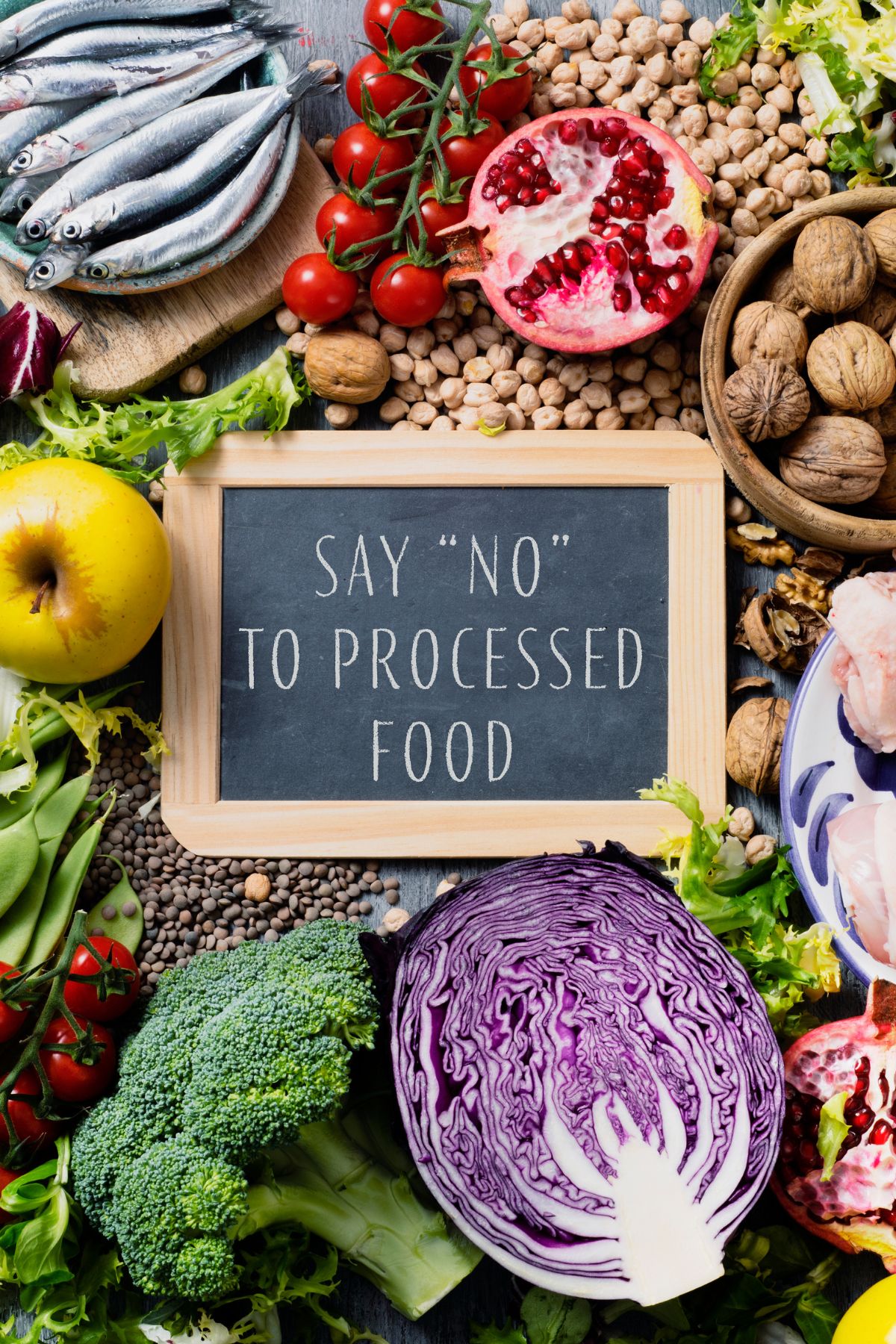12+ Foods to Increase Progesterone Naturally
Whether you’re in your childbearing years or older, increasing progesterone can help reduce symptoms of PMS and perimenopause. Learn which foods can help increase progesterone naturally, plus which to avoid. Foods you may wish to add to your diet to try and increase your progesterone naturally include: nuts, seeds, leafy greens, dark chocolate, avocado, oats, banana, grass-fed beef, and more.

Overview of Progesterone
Progesterone is a steroid hormone. It is produced by the body in both men and women, although it is often thought of as a female hormone as it plays such an important role in female reproductive health.
In women, progesterone is primarily produced in a gland in the ovaries called the corpus luteum. This is a temporary gland that forms after ovulation (the release of an egg from one of the two ovaries).
Progesterone is needed for the development of blood vessels and glands to support pregnancy, thickening the lining of the uterus. This creates the right environment for the implantation of a fertilized egg.
Progesterone also supports the development of an embryo by prompting the endometrium to supply the necessary nutrients.
The placenta begins producing progesterone, too, and eventually becomes the main provider throughout pregnancy. The high levels of progesterone in the body at this time prevent the production of further eggs and later help kickstart lactation.
Fluctuating levels of progesterone in the body can lead to irregular periods and the symptoms of perimenopause and menopause including mood swings and lack of ovulation.
Signs of Low Progesterone
There are many symptoms that may indicate that your progesterone levels are low, or that estrogen has become the dominant hormone.
Symptoms of low progesterone can include:
- Irregular or missed periods
- Spotting
- infertility/miscarriage
- Reduced sex drive
- Weight gain/bloating
- Anxiety, depression, or other mood changes
- Fatigue
- Difficulty in concentrating
- Breast tenderness
- Headaches/migraines
See my related articles on how to reduce bloating during perimenopause and how to reduce menopause joint pain.
Foods to Avoid
When trying to boost your progesterone levels, do your best to avoid processed foods. Production methods may result in those foods containing byproducts called xenoestrogens – substances that can bind to estrogen receptor sites with potentially adverse results.
See additional articles on how to reduce estrogen dominance naturally and the best supplements to reduce estrogen dominance.
This may include meats, too, and it is best to buy meats that are labeled “hormone-free”. The consumption of additional hormones via your diet can influence your hormonal balance and may lower your progesterone levels.
Foods to Increase Progesterone
Foods that help increase your progesterone levels don’t actually contain any progesterone themselves. Instead, they contain particular nutrients that support your body in efficiently producing progesterone in optimal amounts.
Here are some of the best foods to try to increase progesterone naturally to help correct hormonal imbalances.
But, always check with your healthcare provider especially if you are pregnant. It’s very important to have enough progesterone in early pregnancy to ensure a healthy pregnancy.
1. Nuts and seeds
Nuts are great sources of two important progesterone-boosing minerals – zinc and magnesium.
Research shows that zinc can increase the number of binding sites on a progesterone receptor, resulting in higher overall progesterone levels.
Magnesium, meanwhile, has been shown to have an inverse relationship with estrogen. That means that as your magnesium levels become higher, your estrogen levels drop accordingly.
Since estrogen essentially “opposes” progesterone in the body, lower estrogen levels result in a natural increase in progesterone.
Cashews, almonds, and Brazil nuts are especially good magnesium sources, as are pumpkin, flax, and chia seeds.
Nuts high in zinc include cashews, pecans, Brazil nuts, pine nuts, and almonds; while pumpkin, chia, sunflower seeds, and flax seed are the best seeds to choose. They are also high in vitamin e.
You may also want to choose organic nuts and seeds when possible.
See these recipes for Pumpkin Seed Milk, Healthy Seed Crackers, or Vanilla Hemp Milk.
2. Beans
Beans and other legumes like lentils, peas, chickpeas, and soybeans are also excellent sources of magnesium. Black beans, for example, contain 120mg of magnesium per one cup serving. That’s a whopping 30% of your recommended daily intake (RDI).
Try including legumes as a side with your meals or use them to create nutritious soups.
Some of my favorite recipes with beans include Air Fryer Chickpeas, Instant Pot 15 Bean Soup, and Lentil Turkey Soup.
3. Cruciferous vegetables
Vegetables like cauliflower, cabbage, and broccoli are believed to have estrogen-lowering effects. This is because they contain a compound called I3C, which helps the body eliminate excess estrogen effectively.
As mentioned above, lowering estrogen levels is key to preventing estrogen dominance (when the ratio of estrogen to progesterone is too high). Proper elimination of estrogen from the body will help these levels become more balanced.
If you struggle to enjoy cruciferous vegetables, try roasting them to bring out their sweetness or use them in your soups. Or, try making a Broccoli Smoothie or Broccoli Sprout Smoothie! I also like this recipe for a plant-based Broccoli Potato Soup.
4. Dark chocolate
Dark chocolate is another good source of magnesium. Since magnesium is known to lower estrogen and balance the progesterone/estrogen ratio, it’s a treat you can enjoy guilt-free!
As a bonus, dark chocolate is full of lots of other useful nutrients, including flavonols and a range of minerals.
Just be sure that you are buying high-quality dark chocolate. Ideally, this should have a high cacao content of around 70% (although you can go a little lower if you find this too bitter).
Avoid brands with lots of extra sugar or additives or those processed with alkali. This is because their health benefits are reduced.
Or, try making recipes using chocolate including this Chocolate Avocado Pudding, Strawberry Banana Chocolate Smoothie, or Vegan Chocolate Covered Almonds.
5. Grass-fed beef
Typically, the livestock on factory farms is given feed to which antibiotics and growth hormones (like estrogen) have been added. The aim of this is to increase the amount of meat that each animal yields.
However, studies have shown that quite a significant proportion of estrogen is passed from the meat to the consumer. This means that eating traditionally reared meat may lead to estrogen dominance.
Instead, opt for organic, fully grass-fed beef, produced from animals fed a natural and hormone-free diet (see where to find grass-fed beef).
You may also wish to consume lean meat or lean cuts of beef.
6. Fatty fish
Boosting your progesterone levels is another good reason to include more fatty fish like salmon in your diet.
It is high in vitamin B6, which is believed to be helpful in supporting ovulation.
What’s more, it is an excellent source of Omega 3 and Omega 6 fatty acids. Omega 3s are particularly helpful, increasing the luteinizing hormone in some women and subsequently raising progesterone levels.
If you are following a vegetarian or vegan diet, you can receive similar benefits from consuming more flax seeds, walnuts, and leafy greens (see below).
If not, try recipes like Salmon Stir Fry, Instant Pot Salmon and Potatoes, or Keto Canned Salmon Salad.
7. Leafy greens
Leafy greens like spinach, kale, turnip greens, and collard greens are all good sources of magnesium. They are also rich in calcium – another mineral that has been proven to be helpful in raising progesterone levels.
Studies have demonstrated that the production of progesterone needs calcium ions in order to take place, meaning that tucking into more leafy greens will help maximize your levels.
See more of the best green vegetables to include in your diet, or try growing your own greens such as kale microgreens.
8. Avocado
Rich in B vitamins, avocadoes are ideal for maintaining good levels of progesterone.
Avocado fruits contain lots of healthy fats, that science shows can increase progesterone levels and reduce the risk of anovulation (a menstrual cycle that takes place without an egg being released). Chronic anovulation is often the reason for infertility.
Avocado is very versatile and there are lots of different ways you can enjoy it. Try mashing it and serving it with a sprinkle of salt on toast, mixing it into scrambled eggs, or using it as a substitute for mayo in salads and sandwiches.
I love this Avocado Spread recipe or this Avocado Mango Salad recipe.
9. Pumpkin
Pumpkin is another food high in vitamin B6, which – as mentioned earlier – can help support ovulation.
You can roast it and serve it as a side, use it to make soup, blend it into hummus, or even use it to create sweet dishes like pumpkin pie!
Make sure you don’t throw away the seeds – they are rich in magnesium, zinc, and healthy fats, all of which are helpful in boosting progesterone production. You can make Air Fryer Pumpkin Seeds after you make Air Fryer Pumpkin!
10. Oats
As discussed earlier, the elimination of excess estrogen is vital in preventing estrogen dominance and therefore maintaining a healthy progesterone/estrogen balance.
The gut helps regulate estrogen levels, so it is a good idea to consume plenty of fiber to add bulk to stools and assist with estrogen excretion. See these gut healing foods or try this leaky gut diet.
Oats are an excellent source of fiber while also providing lots of other useful nutrients like vitamins, minerals, and antioxidants. You can use them for everything from making your morning oatmeal to using them as a coating for chicken strips or fish.
I like these Overnight Protein Oats or this recipe for Air Fryer Apples with Oats.
11. Citrus fruits, kiwi, and peppers
These are some of the best sources of vitamin C, a valuable nutrient in increasing progesterone levels. Research has shown that women supplemented with vitamin C have higher levels of progesterone in their systems.
Other fruits and veggies high in vitamin C include guavas, blackcurrants, cantaloupe, chili peppers, and spinach.
Choose red peppers over green or yellow as they have the highest amount of vitamin C.
This Adrenal Cocktail recipe is a great source of whole food vitamin C.
12. Bananas
Last but not least on the list of foods to increase progesterone is bananas. They are another great source of vitamin B6, decreasing your estrogen levels and keeping your hormones in balance.
Enjoy them just as they are, slice them and use them to top your peanut butter on toast, blend them in a smoothie, or use them to create naturally sweet sugar-free ice cream.
Or, try making Dairy-Free Banana Pudding from scratch or this recipe for Banana Popsicles.
Why Progesterone May Be Low Starting in Your 30s
As the main function of progesterone is to support pregnancy, your levels begin to drop as you get older as fertility wanes.
The decline begins in your late 20s but accelerates after the age of 30. By the time you reach menopause, your progesterone levels are negligible.
This is why you may start to notice changes in your menstrual cycle in your late 30s and moving into your 40s. Low progesterone levels may also be caused by poorly functioning ovaries, which can be a problem at any age.
Progesterone Changes During Perimenopause
The word “perimenopause” means “around menopause” and is sometimes referred to as the “menopausal transition”.
Sometimes starting as early as your mid-30s, it is the point at which your body makes the transition to menopause. This is when your reproductive years come to an end.
The amount of progesterone we produce declines sharply during perimenopause. As there is less available to regulate the growth of the lining of the uterus, it might become thicker before it is shed. This can lead to particularly heavy periods.
The symptoms of conditions such as endometriosis and fibroids may also become more bothersome. This is because there is far less progesterone to oppose the estrogen that fuels them – a condition known as estrogen dominance.
Reduced progesterone levels can also lead to vaginal dryness at this time. This is because progesterone helps thicken the mucus in the cervix.
FAQs
Birth control devices such as birth control pills, contraceptive patches, contraceptive injections, hormonal intrauterine devices (IUDs), and contraceptive implants use a synthetic form of progesterone called progestin.
Progestins are structurally similar to progesterone but may have slight differences in their chemical composition, allowing them to be created synthetically.
Oral micronized progesterone is the “natural” type of progesterone that can be taken in a pill form. This form of progesterone is beneficial for hormone replacement therapy (HRT) as it closely mimics the progesterone naturally produced in the body.
It has been associated with fewer side effects compared to synthetic progestins, and it may provide additional benefits such as improved sleep, reduced hot flashes, and potential protection against certain estrogen-related risks, making it a preferred option for some individuals seeking hormone balance and menopausal symptom relief.
The use of progesterone cream to increase progesterone levels is a topic of debate among medical professionals. While some proponents claim that progesterone cream can effectively raise progesterone levels, there is limited scientific evidence to support this claim.
More Women’s Health Articles You Might Like
Conclusions
With such a variety of foods to choose from that help increase your progesterone levels, it’s easy to find something you’ll enjoy and that you’ll be happy to consume regularly.
How well each food will work for you will depend on your own particular body and needs, but a healthy diet rich in the foods and nutrients listed here will go a long way to improving your hormonal health.
Don’t forget to join my newsletter list to get exclusive clean eating recipes and tips. The newsletter is 100% free with no spam; unsubscribe anytime.
About the Author: Carrie Forrest has a master’s degree in public health with a specialty in nutrition and is a certified holistic nutritionist. She is a top wellness and food blogger with over 5 million annual visitors to her site. Carrie has an incredible story of recovery from chronic illness and is passionate about helping other women transform their health. Send her a message through her contact form.
Note: this post is for informational purposes only and is not intended as medical advice. Please consult your healthcare provider for recommendations related to your individual situation.



















